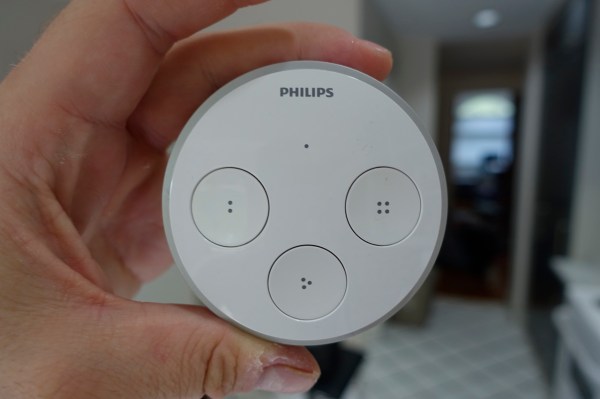The Philips Hue system provides lighting that you can control with your smartphone, and automate with location gating and time-based alarms. But for all its fancy magic, I still find myself using physical lightswitches to turn my Hue system on and off, in larger part because often it takes more steps to unlock my iPhone, find the Hue app, open it and select the “All off” or desired scene button. Philips seems to have acknowledged that with the new Hue Tap kinetic light switch, which is an elegant solution to the one noteworthy failing of Hue before now.
The Hue Tap connects to your existing bridge with a simple setup process that involves just holding a button on the device to help it find your bridge automatically. Mine connected easily and once it was connected, it was relatively easy to assign custom functions to each of the Tap’s four distinct buttons – three small inset ones, and the entire face of the Tap, which is itself a button, too.
[gallery ids="1037543,1037546,1037547"]
You can set the buttons to perform a number of tasks, including setting them to one of the scenes you’ve created in the Hue app for your phone, or turning off all the lights entirely. The one issue that’s slightly bothersome is that a button must be assigned to turn off all the lights – simply pressing one of the buttons assigned a scene a second time doesn’t turn the lights off as you might expect.
Hue Tap comes with a mounting plate that has adhesive strips already attached, so it’s ready to attach to your wall. These work really well and bond in just a few seconds, and then you can screw off the Tap with a simple counterclockwise motion to take with you around the house. I ended up mounting mine at the top of the stairs to my bedroom where I always wish I had a switch for the downstairs lights, and then I detach the Tap and take it with me to bed so I can turn the lights off before I go to sleep.
Philips is committed to building a vast ecosystem around its Hue lighting system, and the Tap is a great example of how they’re listening to feedback and shoring up any deficiencies in how the Hues currently work and interact with one another. A single bridge can support up to 25, though at $60 a pop you probably don’t need that many. It’s a great addition from Philips, however, and owning at least one should provide a nice upgrade for your existing Hue setup.
